A route concept study on the Netherlands
This report has conceptualized three potential routes that could form a single hyperloop network in the Netherlands. The network aims to support the government's mobility vision, transform the country's social, economic, and environmental competitiveness, and offer significant time savings to commuters. The report discusses the challenges and opportunities of this proposed network, expected demand, costing, and performance, and calls for collaboration with public and commercial organizations to develop transportation infrastructure in a more sustainable way.
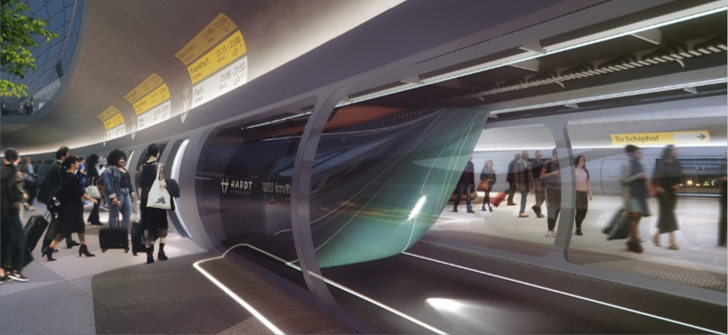
Strategic context
The Netherlands is facing challenges with housing supply pressures and congestion in its transport system, particularly in urban areas. The government is actively addressing these challenges through investments in transport infrastructure and pursuing sustainable mobility solutions. Hyperloop offers a fast, energy-efficient, and low-emissions alternative that can support the country's efforts to reduce regional disparities and share the benefits of growth. As the technology continues to develop, it has the potential to complement existing transport infrastructure and enhance sustainable urban planning initiatives in the future.
Challenges and opportunities
The Dutch government has set its sights on building a more robust public transportation network by 2040, one that connects more cities and becomes the preferred option for travelers. This initiative stems from projected growth in travel across the country, extending beyond the Randstad region. To make this vision a reality, the government plans to expand the current network of fast and frequent public transport services, incorporating cities such as Zwolle, Arnhem-Nijmegen, Eindhoven, and Breda into the Greater Randstad catchment.
In addition, the government aims to unlock housing in areas that correspond to projected growth in travel, thereby creating a seamless and integrated transport system that caters to the needs of travelers throughout the Netherlands. However, it's worth noting that the mobility landscape is rapidly evolving due to technological advancements, and new services should be considered when planning and developing this future transport network.
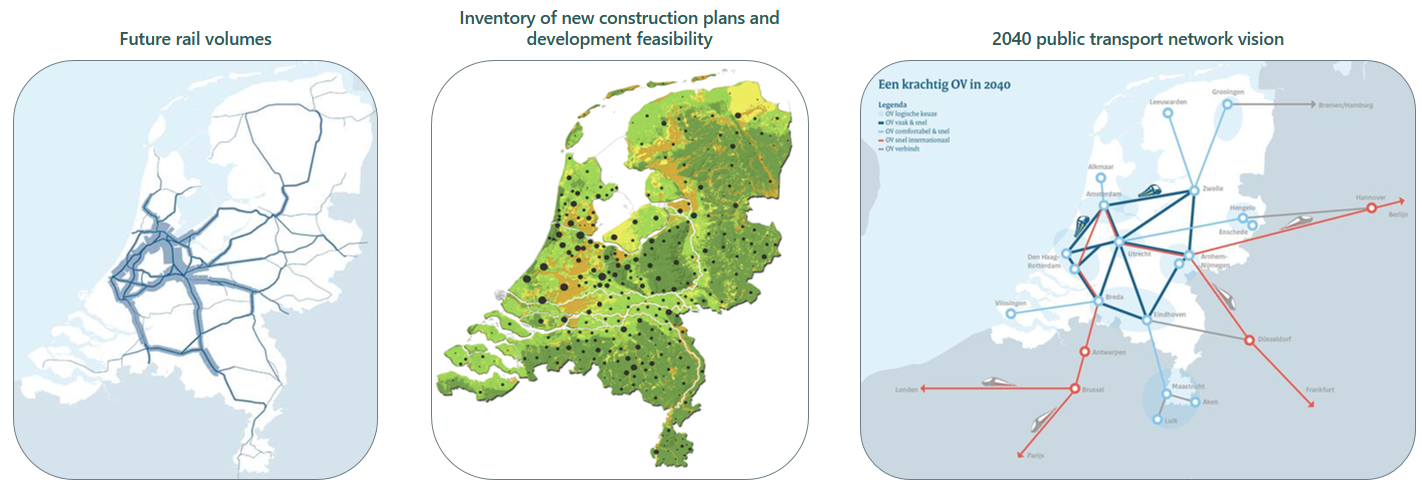
Route
To kick-start a conversation about hyperloop in the Netherlands, Hardt has conceptualized three routes that could ultimately form a single hyperloop network. This network aims to support the government's mobility vision, and transform the country's social, economic, and environmental competitiveness.
- A hyperconnected “ring” around the Greater Randstad
A first route is a hyper connected "ring" around the Greater Randstad. This area is experiencing high population and employment growth, which is putting pressure on the intercity rail network. A high-capacity, ultra-fast, and frequent hyperloop ring can be introduced to accommodate future demand, relieve crowding on the intercity rail network, and provide passengers with valuable time savings.
- A “north-south” cross-regional connection
The second route is a north-south corridor that unlocks the development potential of cities across the north and south of the country, by improving regional access and creating new job opportunities.
- Delivering the Lelylijn as a hyperloop
The Lelylijn, which aims to bridge accessibility gaps between Flevoland and Groningen with the rest of the Netherlands, could potentially be implemented as a hyperloop. This would complement the European Hyperloop Center that currently under construction in Groningen, with testing to start in 2024.
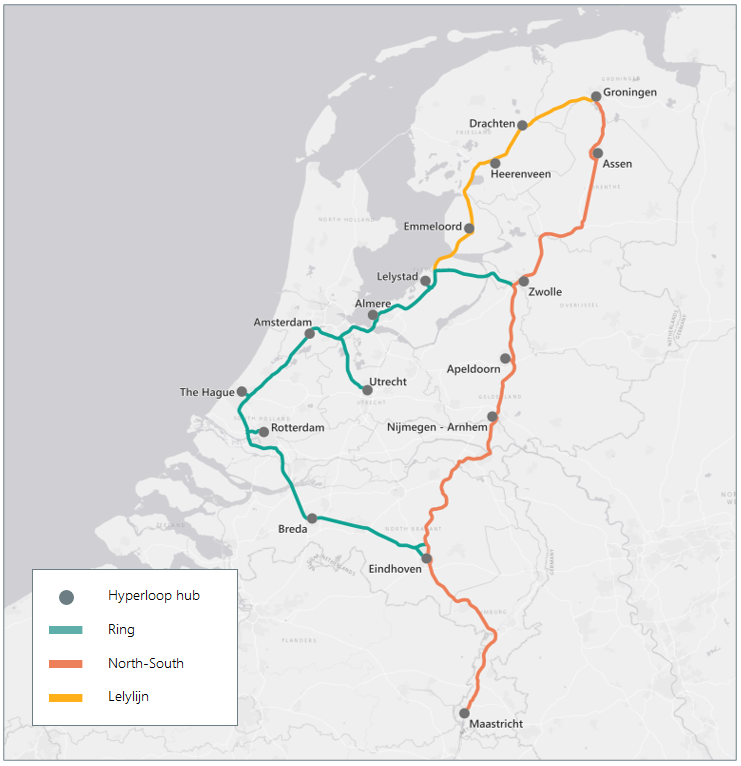
Expected demand
If this hyperloop network is successfully implemented in the Netherlands, it could reduce travel times between Groningen and Maastricht down to 90 minutes (see chart below). The benefits of this network go beyond travel time savings. It could potentially reduce car trips by up to 13% across the country, creating a shift to public transportation (see figure below).
According to an early analysis by Hardt, around 76 million passengers would use hyperloop in the Netherlands per annum, with most of the demand concentrated within the Randstad and nearby cities. This forecast does not include induced demand factors (new demand created as a result of multimodal mobility becoming more attractive), or policies that would result in more housing being distributed outside of the Randstad. Thus, there is potential for future development plans to incorporate additional housing and jobs around new hyperloop corridors.
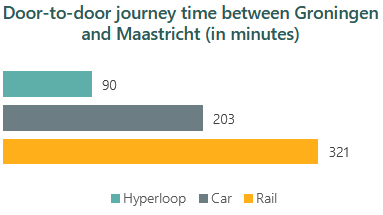
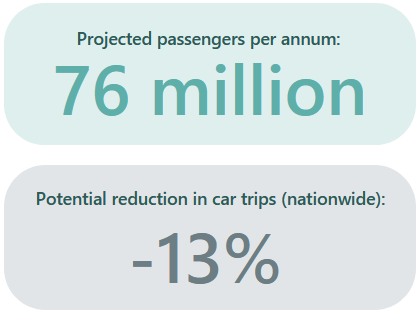
Costing and performance
To initiate the development of a Dutch hyperloop network, minimum viable routes can be implemented in select areas. These short segments can serve as the “anchor point” for long-term integration into a Dutch and European hyperloop network. Several potential "first-mover" sections include the following:
- Rotterdam Centraal – M4H: This 3.5-kilometer stretch repurposes existing rail corridors and links the M4H urban renewal precinct directly with Rotterdam Centraal. It provides a great showcase of the technology and is located at the site of Rotterdam’s Future Mobility Park.
- Eindhoven Centraal – Eindhoven Airport: This slightly longer 7-kilometer stretch connects Eindhoven Centraal with Eindhoven Airport, offering potential shuttle opportunities to high-tech precincts, such as ASML.
- Amsterdam Duivendrecht – Almere Centrum: This 20-kilometer corridor links a new Pampus development in Almere to Amsterdam's metropolitan area in just 5 minutes, offering broader accessibility benefits.
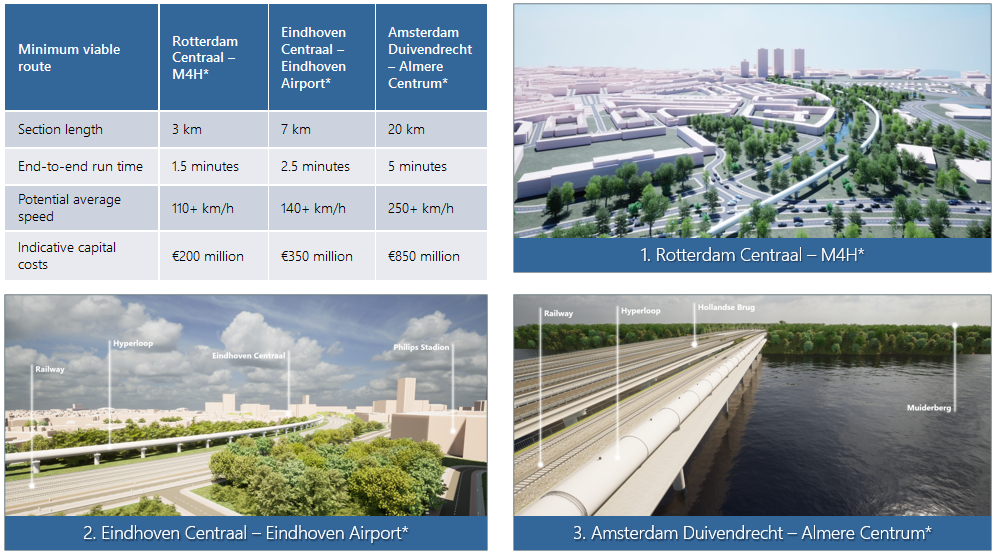
Call for collaboration
Cities and regions that actively participate in the development of a hyperloop network can secure long-term competitive advantages and attract new businesses and investments. The development of hyperloop technology can lead to high-skill, high-value work and can contribute to the reshaping of Europe’s social and economic geography. We (Hardt) are ready to work with public and commercial organizations to develop transportation infrastructure in a more sustainable way.
Acknowledgements

